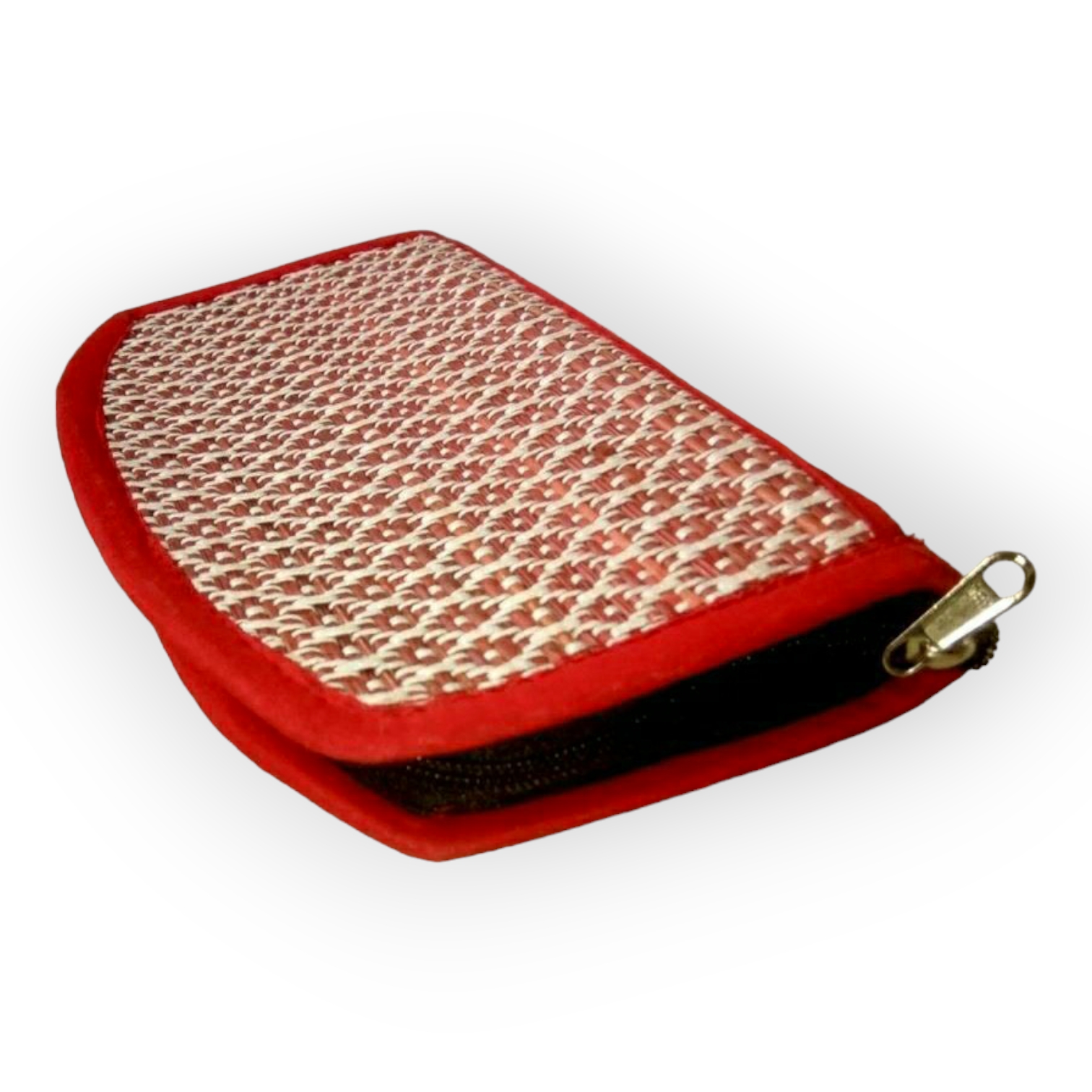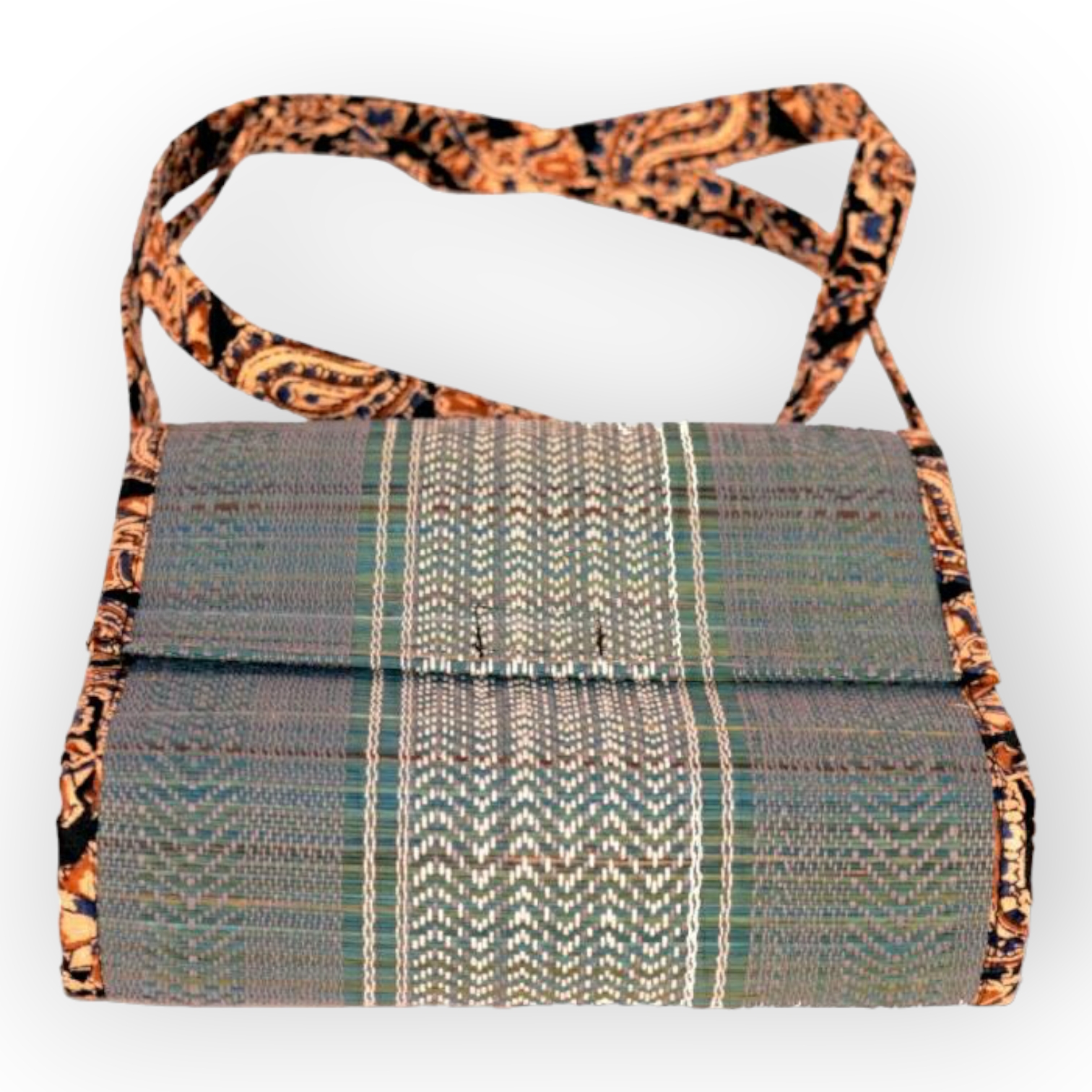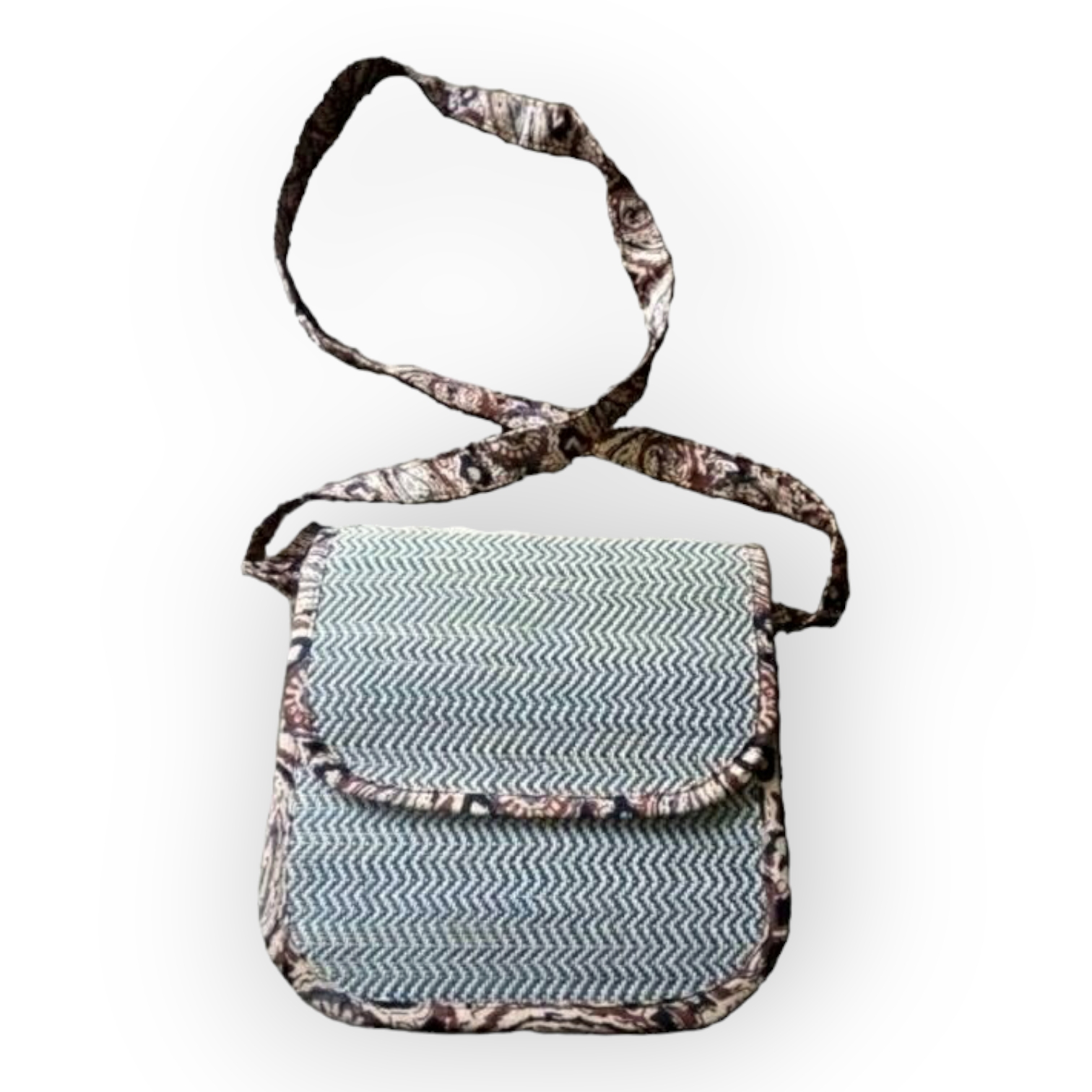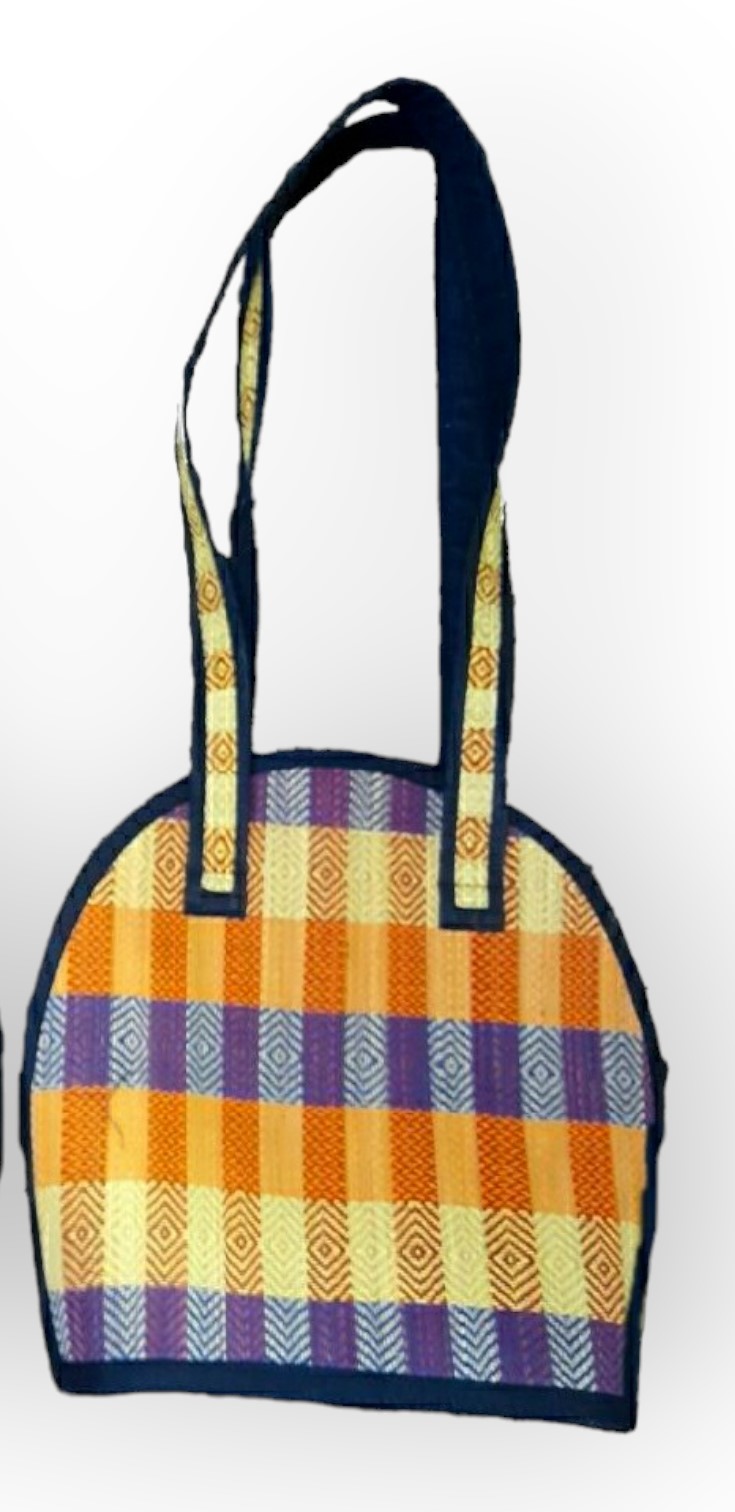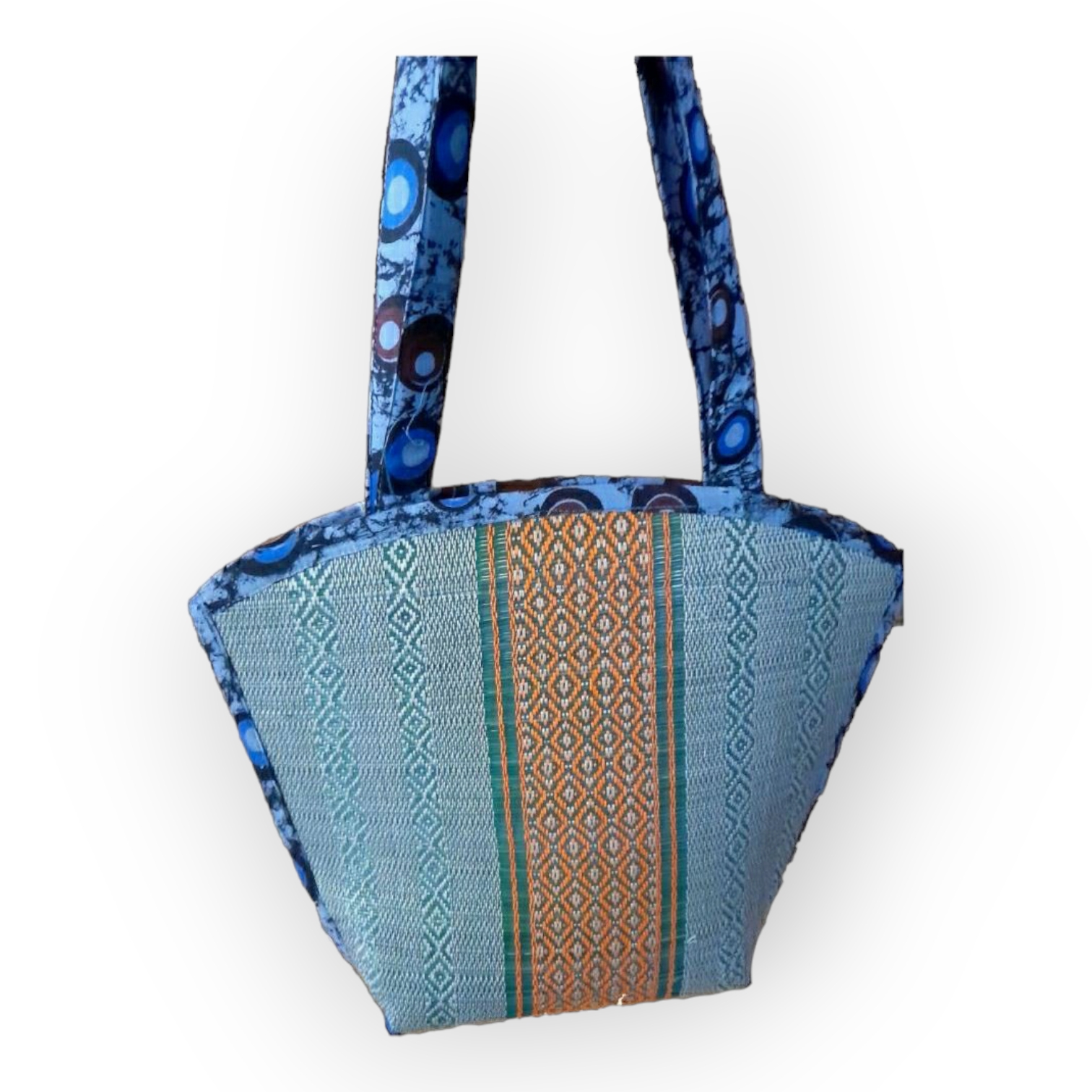Madur Kathi Ladis Purse in Red Colour
The Madur Kathi Ladies Purse in red is a chic accessory blending traditional craftsmanship with contemporary style. Crafted from Madur Kathi, a type of reed indigenous to Bengal, it boasts durability and eco-friendliness. The purse features intricate weaving, adding a touch of elegance to its design. Its vibrant red hue makes a bold fashion statement while remaining versatile for various occasions. With compartments for essentials, it combines functionality with aesthetic appeal, making it a must-have accessory for fashion-conscious individuals..
- Need Assistance? Feel free to reach us at support@giheritage.com or contact +91-7483932390 for assistance.
- Note: Although an artisan meticulously crafts their work with great attention to detail, there may still be some minor difference present, showcasing the inherent imperfections that add a touch of uniqueness to each piece. Kindly ignore such minor differences and slight variations in color, weight and dimensions as it adds to the uniqueness of product. Each piece is a one-of-a-kind treasure, making your purchase truly special.
- • GI Origin : West Bengal
- • Product Material : Cotton & Eva
- • Size : 8.5 x 5 x 1 Inches
- • Weight : ~ 100 Grams
- • Colour : Red
- • Product GI Certificate No : 320
- • User GI Certificate No : AU/7499/GI/567/2
Description of the Goods
Madurkathi is an age-old traditional craft of West Bengal, originating from the districts of Paschim Medinipur and Purba Medinipur. Traditionally, these mats are woven from a soft reed known as Cyperus tegetum or Cyperus pangorei, which grows abundantly in the alluvial tracts of these regions. The craft has a rich history dating back to the medieval period, with mats being an integral part of rural Bengal's social scene.
Geographical Area of Production
Geographically, the production of Madur mats is concentrated in areas like Bhagabanpur in Purba Medinipur and Sabang, Pingla, and Naryangarh blocks in Paschim Medinipur. These regions benefit from the conducive soil and climate required for cultivating the Madur reed.
Proof of Origin (Historical records)
History of the Districts
Undivided Medinipur, also referred to as Medinipur was one of the largest districts of West Bengal after independence, covering almost 16% of the total area of West Bengal. On 1st January, 2002, the erstwhile Medinipur district was bifurcated into Paschim Medinipur and Purba Medinipur to enable better administration and an equitable distribution of the fruits of development. Medinipur town became the head quarter of Paschim Medinipur. The head quarter of Purba Medinipur was made at Tamluk. Both the districts now enjoy separate administrative network with different developmental plans to promote optimum utilization of the resources available. Medinipur district (undivided) is rich with ancient history of royal dynasty and their royal activities. The kingdom of Swashanka, Harshabardhan was the part of undivided Medinipur.
History of Madur Kathi
Records of the Medieval Period provide the first information about mat weaving in the region of Bengal- when both ordinary mats and the fine variety were produced. In Bengal, the word Madur is a generic for floor mats. Though actually, it is the name given to mats woven from a specific type of reed. Mats have been an integral part of the social scene of rural Bengal.
Method of Production
The production process involves several labor-intensive steps, starting from the cultivation of the Madur reed to the weaving of mats using traditional techniques. The reeds are harvested, processed, dyed with vegetable dyes, and woven into intricate designs influenced by local culture. Each mat is a testament to the artisans' skill and dedication, with variations in quality and design catering to different preferences and purposes.
Uniqueness
Overall, Madur mats exemplify the rich tradition of craftsmanship in West Bengal, blending heritage with innovation to create products that are both culturally significant and commercially viable.

 INR
INR USD - $
USD - $
 CAD - Can$
CAD - Can$
 EUR - €
EUR - €
 GBP - £
GBP - £
 SGD - S$
SGD - S$
 AUD - A$
AUD - A$
 MYR - (RM)
MYR - (RM)
